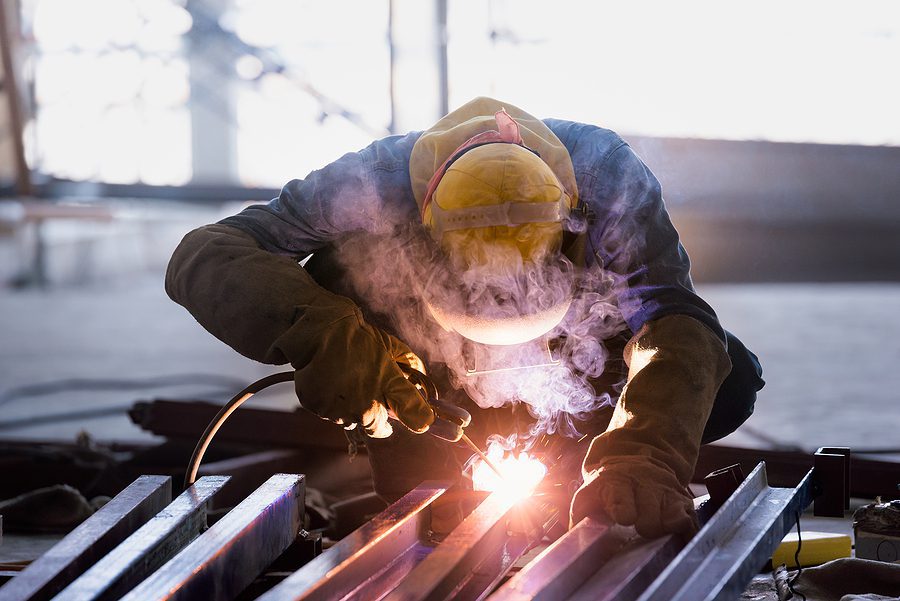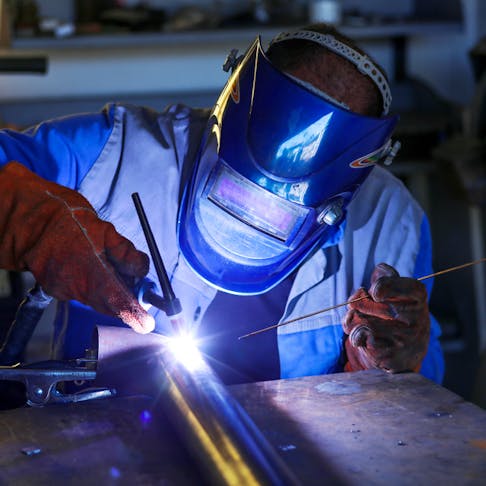Everything about Welding: Key Insights Into Techniques and Finest Practices for Success
Welding encompasses a variety of techniques, each fit for certain materials and applications. Comprehending these techniques, such as GMAW, SMAW, and TIG, is necessary for attaining suitable outcomes. The right equipment and security methods can not be ignored. As preparation and fixing play critical roles in the welding procedure, mastering these components can considerably boost the high quality of the last item. What are the crucial variables that assure a successful weld?
Understanding Different Welding Strategies
Welding strategies include a range of methods, each matched to certain applications and materials. Amongst the most usual methods are Gas Metal Arc Welding (GMAW), Secured Metal Arc Welding (SMAW), and Tungsten Inert Gas Welding (TIG) GMAW, likewise called MIG welding, is popular for its rate and versatility, making it optimal for thin products. SMAW, or stick welding, is favored for its simplicity and effectiveness in outside environments, particularly with thicker steels. TIG welding provides accuracy and control, making it suitable for detailed work and non-ferrous steels (Welding). Each method has its one-of-a-kind advantages and factors to consider, allowing welders to pick the very best approach based on the project's needs, material type, and wanted results. Recognizing these techniques is essential for successful welding
Crucial Welding Tools and Tools
While numerous welding strategies call for specific skills, the ideal tools and devices are equally crucial for achieving high quality results. Necessary welding equipment includes welding devices, which vary relying on the strategy-- such as MIG, TIG, or stick welding. Safety equipment, consisting of helmets, gloves, and aprons, warranties safety and security and comfort during the process. Furthermore, clamps and fixtures aid safeguard products in location, making certain precision in welds. Consumables like welding poles, cable, and protecting gas are likewise essential parts that influence the high quality of the weld. Additionally, tools such as cutters and mills assist in surface preparation and post-weld finishing, contributing to an expert result. Buying top quality equipment eventually boosts the effectiveness and effectiveness of welding tasks.
Safety Practices in Welding
Correct security practices are crucial in the welding industry to shield workers from possible risks. Welders have to use appropriate individual protective tools (PPE), including headgears with appropriate shading, gloves, and flame-resistant garments. Ample ventilation is essential to decrease direct exposure to hazardous fumes and gases created during the welding process. Furthermore, workers need to be trained in the right handling of welding equipment to avoid crashes. Fire precaution, such as maintaining combustible materials away from the welding location and having fire extinguishers conveniently available, are needed. Regular assessments of equipment and offices can assist identify potential threats prior to they result in accidents. By sticking to these safety practices, welders can create a more secure working setting and reduce dangers linked with their trade.
Readying Products for Welding
Preparing products for welding is a vital step that considerably affects the high quality and integrity of the final product (Montana Mobile Welding and Repair Welding). Appropriate preparation includes cleaning up the surfaces to remove impurities such as rust, oil, and dust, which can compromise the weld. Techniques such as grinding, sanding, or using solvents are commonly used to attain a clean surface. Additionally, ensuring that the products fit with each other comfortably is crucial; voids can bring about weak welds. It's likewise essential to take into consideration the alignment and positioning of the parts, as this will certainly impact the ease of welding and the final outcome. Ultimately, choosing the suitable filler product and ensuring compatibility with the base metals is crucial for attaining strong, sturdy welds
Tips for Achieving High-Quality Welds
Attaining top quality welds calls for focus to detail and adherence to finest techniques throughout the welding procedure. Proper joint preparation is crucial, guaranteeing surface areas are totally free and clean from impurities. Choosing the ideal filler material and welding method based on the base metals is critical for optimal bonding. Keeping regular traveling rate and angle while welding can promote and stop flaws harmony. In addition, controlling heat input is vital; extreme heat can bring about bending and weakened joints. Routinely examining the welds during the process permits immediate changes if necessary. Employing suitable post-weld treatments, such as cleansing and anxiety relief, can improve the durability and integrity of the weld, eventually guaranteeing an effective end result.
Repairing Usual Welding Issues
Welding frequently provides difficulties that can impact the quality and stability of the end product. Common concerns such as porosity, inconsistent weld grains, and getting too hot can develop, each needing certain fixing techniques. Understanding these troubles is vital for technoweld welders to enhance their abilities and achieve ideal outcomes.
Porosity Problems Clarified
Although porosity can typically be overlooked, it continues to be a vital concern in welding that can jeopardize the honesty of a completed item. Porosity describes the presence of tiny gas pockets within the weld bead, which can lead and deteriorate the joint to early failure. This problem typically occurs from impurities, moisture, or incorrect shielding gas protection throughout the welding procedure. To reduce porosity, welders need to validate that the base products are completely dry and tidy, utilize proper securing gases, and maintain consistent welding criteria. On a regular basis checking the equipment and setting can also help recognize potential issues before they manifest in the weld. Attending to porosity properly is essential for achieving strong, durable welds that fulfill top quality standards.

Irregular Weld Beads
Irregular weld beads can significantly impact the top quality and stamina of a finished item. Different factors add to this problem, consisting of improper travel speed, inaccurate amperage setups, and irregular electrode angles. When the welder relocates also rapidly, a bead might show up slim and do not have infiltration, while relocating also slowly can cause too much build-up. In addition, making use of the wrong amperage can cause either undercutting or excessive spatter, both of which concession weld integrity. The welder's strategy, such as inconsistent lantern movement, can likewise lead to unequal bead look. To mitigate these issues, welders should concentrate on maintaining constant, regulated movements and making certain proper tools settings to accomplish harmony in their welds. Consistency is crucial to achieving strong and dependable welds.
Overheating and Bending Issues
Excessive warm throughout the welding process can result in substantial overheating and contorting concerns, affecting the structural stability of the work surface. These troubles commonly manifest as distortion, which can compromise positioning and fit-up, making additional setting up testing. Aspects contributing to overheating include the option of welding criteria, such as voltage and take a trip rate, as well as the sort of material being welded. To reduce these problems, welders must keep regular traveling rate and appropriate heat input while keeping an eye on the work surface temperature level. Additionally, preheating or post-weld heat treatment can help minimize anxieties triggered by quick this air conditioning - Montana Mobile Welding and Repair Belgrade Welding. Regular inspection and adherence to ideal practices are essential in preventing overheating and ensuring the long life and dependability of welded structures
Frequently Asked Questions
What Are the Career Opportunities in the Welding Sector?
The welding market provides diverse profession chances, including positions as welders, teachers, engineers, and assessors. Professionals can operate in production, building, aerospace, and automobile sectors, profiting from strong need and competitive wages in different duties.
Exactly How Can I Improve My Welding Speed Without Compromising Quality?
To boost welding speed without giving up high quality, one ought to exercise efficient strategies, maintain devices, optimize setups, and enhance hand-eye control. Regular training and looking for comments can additionally substantially add to attaining faster, premium welds.
What Certifications Are Readily Available for Welders?
Many accreditations exist for welders, consisting of those from the American Welding Culture (AWS), the National Center for Building And Construction Education and Research Study (NCCER), and numerous industry-specific organizations. These credentials enhance employability and demonstrate ability effectiveness.
How Does Welding Impact the Residences of Metals?
Welding affects the buildings of metals by altering their microstructure, which can cause adjustments in hardness, stamina, and ductility. Heat input and cooling rates throughout the procedure significantly impact these product qualities.
Can I Weld Dissimilar Metals Together?
